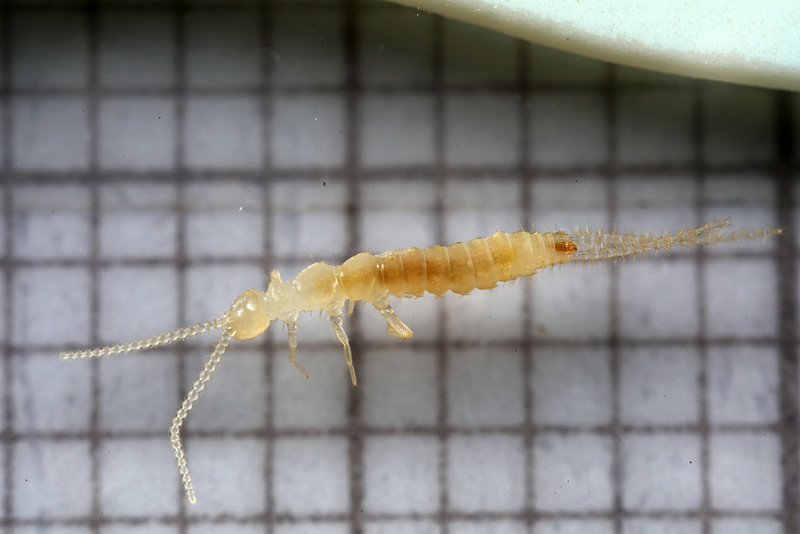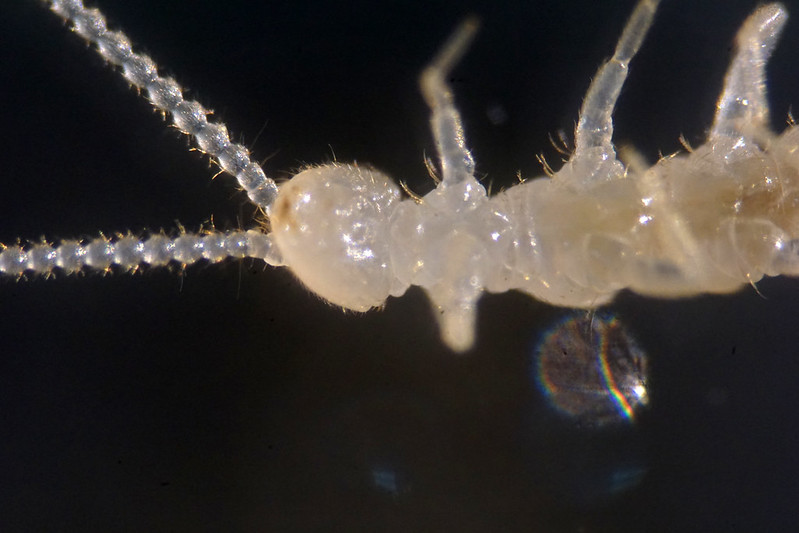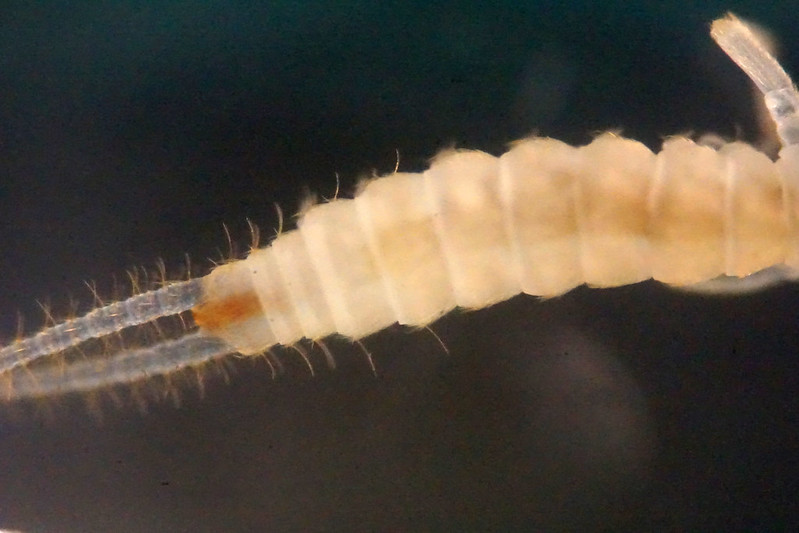
Working from: Delaney, M.J. (1954) Handbooks for the Identification of British Insects. Vol. I, Part 2. Thysanura and Diplura. Royal Entomological Society, London, they seem to key out as Campodea staphylinus:
Mesonotum with postero-lateral macrosetae = Campodea:

Abdominal tergites 6-9 with antero-lateral macrosetae. Length 3·9-4·6 mm = C. staphylinus. "Common throughout British Isles":

But that's where it gets difficult. I'm far from confident in this identification. On Diplura, Barnard says "Currently 11 species have been recorded from Britain, all in the genus Campodea, but there is little information on their status and distribution. In recent years the taxonomy of Campodea species has been modified by European workers and it is no longer clear exactly which species occur in Britain, nor how best to identify them. Consequently the group is in urgent need of revision in this country. Delaney's (1954) key cannot be relied upon because of these taxonomic changes and a new handbook is needed for this small yet significant group" (Barnard, P.C. (2011) The Royal Entomological Society Book of British insects. John Wiley & Sons. ISBN 1444332562). However, I have a problem with that. There are certainly problems with the Delaney key, but in the absence of anything else, surely this has to stand rather than just saying "Nope, not a clue"?
There are three ways to deal with this (apart from resorting to DNA typing which is beyond the reach of virtually everyone):
- Only accept definitive records. This means that essentially no-one will be able to record these species and we will remain ignorant about their populations.
- Record to genus level only - Campodea sp. However, these are common soil organisms so this will only capture low quality aggregated data about populations.
- Accept well-meaning but likely misidentified specimens as Campodea staphylinus sensu lato, etc. This is unsatisfactory also because it will contaminate the records and make it difficult to future workers to interpret.
So I'm stuck and unsure how to proceed...
No comments:
Post a Comment
Comments welcome, I will respond as soon as I can.
Note: only a member of this blog may post a comment.